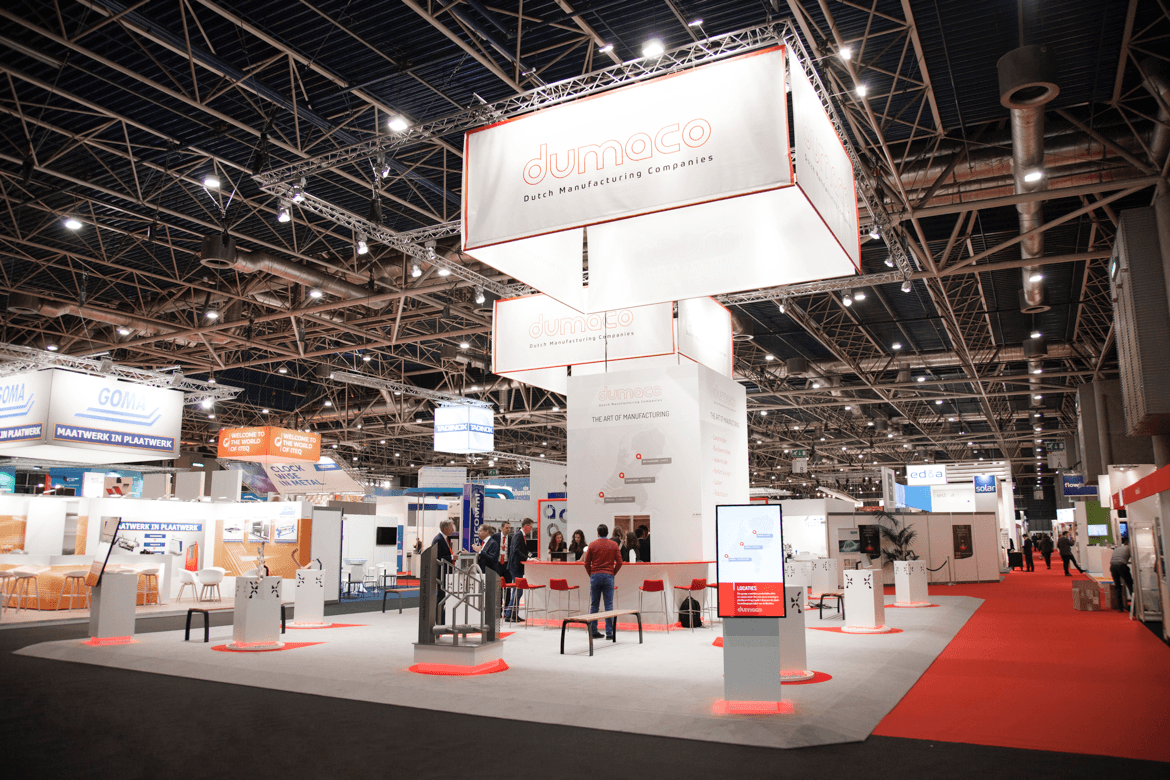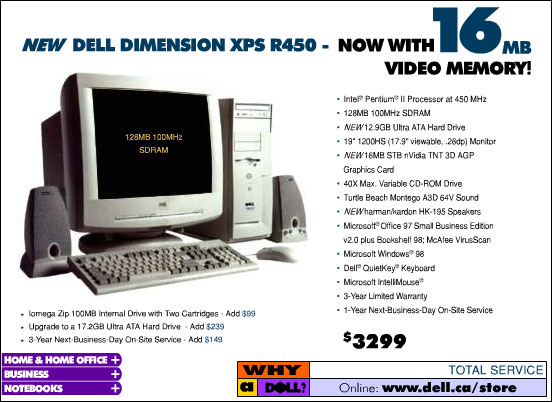*Positioning
10 Surprising Alternatives for a Functional Positioning in B2B

Does your brand dare to position itself really differently? Most B2B companies, especially industrial companies, prefer to play it safe with a functional positioning. But it can be done differently, and this article is full of examples of industrial and other B2B companies that successfully position themselves with other concepts.

Dumaco, a sheet metal specialist, positioned itself in a unique trade fair concept.
In addition to functional positioning, we discuss the two other basic concepts of positioning: symbolic and experiential positioning.
Functional positioning
What is functional positioning:
Functional positioning is about solving a specific problem or offering a benefit to customers. This basic concept typically has a very practical approach and seems straightforward due to its direct and simple nature.

However, a good functional positioning can definitely make a difference. Dell’s positioning around the best price-quality ratio was spot-on and generated $1 million in revenue within 6 months (source). The company was the first to sell directly to consumers (without intermediaries such as retail) and did not maintain inventory, all in an effort to reduce costs.
Therefore, a functional positioning requires focus and a determination to optimize one aspect at all costs. This is also where the biggest pitfall lies; many brands get distracted too easily.
Functional positioning for industrial companies
Industrial companies usually adopt a functional positioning. However, many of them make the mistake of lacking focus on a single solution or benefit. They sell “the drill instead of the hole”. They get bogged down in lists; innovative, customer-oriented, quality, delivery reliability, and so on. As a result, existing customers and prospects have no idea what the company stands for and are presented with a too complex story or a list of buzzwords.

Running harder than the competition is natural for Apex Dynamics.
For example, with our long-standing client Apex Dynamics, a supplier of planetary gearboxes, we focused on the concept of ‘running harder’. By doing so, we went beyond discussing torque, price/quality, and material, and successfully prioritized the customer’s importance.
Of course, it is more difficult to differentiate your brand in a field where everyone uses the same positioning concept. Do you really want to stand out? Then consider a symbolic or even experiential positioning.
Symbolische positioning
What is symbolic positioning:
Symbolic positioning appeals to self-image or social identity and the desire to enhance or improve them. Little value is placed on practical utility in this positioning.

Birkin bag
The most recognizable examples of symbolic positioning are often seen in luxury brands. For example, Hermès with its Birkin bag, an iconic (and much imitated) bag that literally symbolizes wealth and status. The bags, which cost between $15,000 and $300,000, are only occasionally delivered to Hermès boutiques and in very limited quantities. Naturally, this only contributes to the scarcity and exclusivity of the bag, some people just HAVE to have it.
Handbag too feminine? What about cars; a Rolls Royce, Ferrari or Bentley is the ultimate status symbol for someone who wants to show off their wealth.

Work boots from Caterpillar
But before you as a B2B company dismiss this concept, we would like to ask you to think about the manufacturer of heavy-duty equipment, Caterpillar. With texts like ‘Built for it’, the company also positions itself symbolically and aligns with the identity of the ladies and gentlemen who operate the heavy machines. The ultimate proof? Caterpillar jackets, t-shirts, shoes and even electronics are not just corporate gifts, but people are willing to pay a lot of money for them.
An additional advantage of symbolic positioning is that, unlike a good functional positioning, it is capable of embodying multiple factors. The Mercedes-Benz positioning not only communicates status, but also represents (German) quality, comfort and driving pleasure, for example.
Symbolic positioning industrial companies
Symbolic positioning for industrial companies may seem distant, as there is often a strong presence of technical experts in the company’s leadership. The feeling that a symbolic positioning would negate all the technology predominates.
In any case, symbolic positioning is rare in B2B, although there are successful examples:
- Management consultant McKinsey has successfully positioned itself as the advisor for large companies. With McKinsey, you buy authority, status, and expertise, which also reflects on you and your plans.
- A similar feeling comes into play with Goldman Sachs, the investment bank that will do everything possible to succeed. A signal for executives or shareholders that you are doing everything you can.
But how can this be done for an industrial company? Caterpillar shows a good possibility where the company chooses a higher level of abstraction, but also tractor and combine manufacturer John Deere relies on the identity of its target audience:

Getting more done also means more free time for its customers, which is why John Deere also discusses fishing locations and techniques. Everything to make the target audience feel at home and show that John Deere understands them.
Especially among farmers, as we know from our experiences in that sector, the brand of tractor or combine is very important. A Case lover cannot get along with a John Deere fan. The sign par excellence that they have successfully positioned themselves symbolically.
An additional advantage of a symbolic positioning is that due to a certain degree of intangibility of the complete value proposition, it is much more difficult for the customer to switch brands. It helps with customer retention!
Experiential positioning
What is experiential positioning:
Experiential positioning puts the sensory interaction with the consumer at the center of all aspects of the brand. With this approach, a brand can emotionally influence the preferences of the target audience and how they experience the brand.

Goosebumps when Felix steps out of his shuttle at 39km altitude
Emotion is clearly the keyword. Experiential positioning uses touch, smell, color and shape, sound or taste to evoke feelings and connect them to the brand. The Red Bull Stratos event in which Felix Baumgartner skydived from the stratosphere is a great example of the experiential positioning of the brand. Red Bull likes to connect the thrill in your stomach to its brand that “gives people wings.”
Or have you ever had goosebumps from a piece of music? Connect that feeling to a brand and you’ll know exactly what we mean by experiential positioning.
Experiential positioning for industrial company

At first, it was a bit surprising to consider an experiential positioning for an industrial company. However, we quickly found an example in the Dutch company Philips, which took a step further from its previous positioning “Sense and simplicity” with “Innovation and you” in 2013. “Innovation and you” refers to Philips’ ambition to improve the world with its innovations and the company shares stories about it.
On the “Innovation and you” page, the company tells stories like “The essence of family-centered care”, “Naturally good sleep”, and “Repairing a broken heart”. These are topics that evoke warm feelings in all of us and where Philips can make a contribution.
Experiential positioning is at the highest level of abstraction, and therefore requires a crystal-clear idea of what your brand stands for. By translating this into feelings or experiences, you can identify the overarching emotion that you want to convey to your target audience.
Basic concepts of positioning as an exercise
Most likely, you will reject one or more of the above options beforehand. Due to the fear of the unknown, many companies will want to stick to functional positioning. That’s why we discussed brands that you will agree with us have managed to position themselves uniquely. To show you that it is truly possible.
It’s up to you to come up with a symbolic and experiential positioning for your brand, using questions such as:
- What can we do to ensure that our customers see our brand as something that strengthens their social identity and self-image?
- What experience can we offer our customers that will make them associate a feeling with our brand?
We would love to hear the results!
If you want to learn more about positioning and how to get started, read our Positioning page, where you will find in-depth articles as well as dozens of examples and models for any possible positioning challenge.